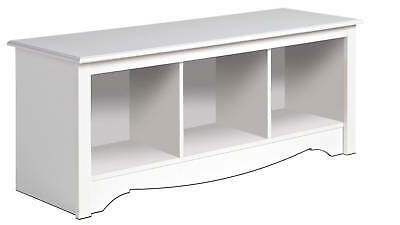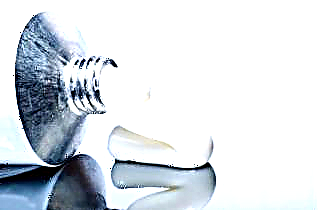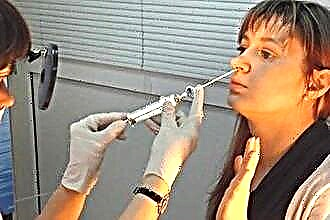Chronic rhinosinusitis is a prolonged inflammation of the nasal mucosa that causes severe swelling and affects one or more of the paranasal sinuses. The sinuses and nasal cavity are connected by means of an anastomosis. As rhinosinusitis develops, it narrows, which entails an insufficient supply of oxygen to the sinus and leads to the further development of the pathological process. Severe congestion of the nostrils appears, normal breathing through the nose is disrupted.
The mechanism of the disease
 Chronic rhinosinusitis is a rather complex ailment that has not been fully studied even today. The importance of provoking factors, as well as pathogenic microorganisms in the development of the disease, has not been precisely determined. The generally accepted point of view is that the inflammatory process in the nasal cavity and sinuses appears due to the blockage of the outflow tract. As a result, the oxygen supply to the sinuses is disrupted.
Chronic rhinosinusitis is a rather complex ailment that has not been fully studied even today. The importance of provoking factors, as well as pathogenic microorganisms in the development of the disease, has not been precisely determined. The generally accepted point of view is that the inflammatory process in the nasal cavity and sinuses appears due to the blockage of the outflow tract. As a result, the oxygen supply to the sinuses is disrupted.
In addition, congenital and acquired defects in the structures of the nose (irregular structure of the concha, deviated nasal septum, and so on) contribute to the development of rhinosinusitis. They can be easily detected during computed tomography. It is used to determine the characteristics of a given disease.
Pathological changes in the area of the middle nasal passage play a key role in the mechanism of the appearance and development of rhinosinusitis. Due to the excessive narrowness of this section, the risk of chronic rhinosinusitis increases many times over. In this case, the pathogenic microflora has the ability to closely contact the mucous membrane. The disease is actively developing with improper treatment (or self-treatment) with antibiotics. This contributes to the acquisition of resistance by pathogenic microorganisms to the active components of the antibacterial drug.
Often, the appearance of rhinosinusitis is triggered by a seasonal cold or ARVI. Studies show that in 90% of all cases, patients with colds are diagnosed with edema of the mucous membrane and the inability to evacuate mucus from the sinuses.
Types of rhinosinusitis
Before treating such a disease, it makes sense to determine its type. Depending on the nature of the inflammatory process, the following types of rhinosinusitis are distinguished:
- Chronic catarrhal rhinosinusitis.
- Purulent rhinosinusitis (during periods of exacerbation of the disease, purulent foci are formed).
- Chronic polyposis rhinosinusitis. The mucous membrane of the nose thickens, which leads to the appearance of polyps.
- Chronic cystic rhinosinusitis. With this type of ailment, the paranasal sinuses become a place of concentration of neoplasms in the form of cysts.
There is another classification based on the type of pathogen. In this case, rhinosinusitis is divided into bacterial and fungal. The bacterial variety appears as a result of the penetration of pathological bacteria into the nasal cavity. Treatment involves the use of antibiotics.

Fungal rhinosinusitis is caused by fungi. A characteristic feature of this type of ailment is the formation of mycetoma - a slowly increasing and rather dense fungal body. The key to successful treatment is the use of antifungal drugs.
The transition from acute to chronic form
If the disease was left on its own (not completely cured rhinosinusitis), the patient turned to the doctor too late or did not carry out the prescribed therapy, the acute form easily turns into a chronic one. Improper use of antibacterial agents leads to the fact that the pathogen becomes resistant (insensitive) to the active components of the antibiotic. In addition, some other factors contribute to the transformation of the disease.
People with anatomical disorders of the structure of the nose are at risk. For example, due to mechanical injury, the nasal septum can be deformed. As a result, the flow of air into the paranasal sinuses is limited. This pathology may also be congenital. All this increases the risk of the transition of an acute form of rhinosinusitis into a chronic one.
 Often, operations carried out in the upper jaw area also increase the likelihood of a chronic form of the disease. Removal of infected or decayed upper teeth, advanced form of caries - these and some other factors can lead to sluggish rhinosinusitis. The pathological process is aggravated by bad habits: smoking, drinking alcohol and so on.
Often, operations carried out in the upper jaw area also increase the likelihood of a chronic form of the disease. Removal of infected or decayed upper teeth, advanced form of caries - these and some other factors can lead to sluggish rhinosinusitis. The pathological process is aggravated by bad habits: smoking, drinking alcohol and so on.
A predisposition to allergies is the next possible cause of the onset of the disease. Do not forget about air pollution (this is especially true for residents of large cities). An unfavorable environmental situation leads to the appearance of a whole spectrum of respiratory diseases, including the development of a chronic form of rhinosinusitis. The neglect of a common cold, a decrease in immunity - all this also contributes to the transformation of the disease from an acute form to a chronic one.
Symptoms
Acute rhinosinusitis is characterized by a bright and almost instantaneous manifestation of clinical signs. As for the chronic form of the disease, in this case we can state the secrecy and even the complete absence of manifestations (especially during periods of remission). Important symptoms include the following:
- Periodic pain in the area of inflamed paranasal sinuses. If pathological changes affect the maxillary sinus (sinusitis), pain is found in the cheeks and just below the eyes. When the infectious focus is concentrated in the frontal sinuses (frontal sinuses), the pain is localized in the superciliary arches.
 The paranasal sinuses are involved in the formation of the voice (they act as a resonator). In chronic rhinosinusitis, when they are blocked, the vocal timbre changes. Therefore, a nasal tone often appears in the patient's voice. He breathes through his mouth due to severe congestion in his nostrils.
The paranasal sinuses are involved in the formation of the voice (they act as a resonator). In chronic rhinosinusitis, when they are blocked, the vocal timbre changes. Therefore, a nasal tone often appears in the patient's voice. He breathes through his mouth due to severe congestion in his nostrils.- Clear or purulent nasal discharge. In contrast to the acute form, the chronic form of rhinosinusitis is characterized by moderate mucus discharge. Its yellowish or greenish tint indicates the presence of bacterial pathogens.
- Difficulty in nasal breathing or complete congestion of the nostrils. The patient is not able to breathe normally through the nose, since a large amount of mucus or pus is concentrated in the nasal passages.
- Swelling of the soft tissues of the face. This symptom, as a rule, manifests itself as the acute form of the disease develops. However, with chronic rhinosinusitis, it is also often diagnosed. Swelling of the cheeks and eyelids is clearly visible after a night's sleep.
Body temperature usually does not rise, which is explained by the reduced activity of pathogenic microflora during periods of remission. Only during an exacerbation can it briefly rise to subfebrile values (38-39 degrees).
Diagnostics and treatment
The diagnosis is made only by ENT. In doing so, he is guided by the patient's complaints. Takes into account the patient's condition, data of otolaryngological, laboratory, and instrumental examinations. Diagnostics is carried out in stages.
At the beginning, anamnesis is collected (interviewing the patient), then his examination, palpation (feeling) of the cheekbones and the frontal region is carried out. This makes it possible to determine the intensity of the pain syndrome and identify abnormal changes in the nasal cavity.At the stage of otolaryngological examination, otoscopy, rhinoscopy and pharyngoscopy are prescribed. Examination of nasal mucus allows you to determine the type of pathogen and its sensitivity to antibacterial drugs. X-ray examination, MRI, and computed tomography are used as additional diagnostic methods.
Treatment of chronic rhinosinusitis involves antibiotic therapy. Unlike the acute form, shock doses of antibiotics are not needed to cure the chronic one. Prolonged infection requires long-term and consistent therapy. The task of such drugs is to stop inflammation and prevent its spread to the brain and respiratory organs.
Physiotherapy and surgery are indicated only in especially severe cases when certain complications are diagnosed.
 Purulent foci are eliminated by pumping mucus from the paranasal sinuses. This is a mandatory measure for purulent rhinosinusitis. It allows you to completely exclude the possibility of infection of internal organs by hematogenous (through blood).
Purulent foci are eliminated by pumping mucus from the paranasal sinuses. This is a mandatory measure for purulent rhinosinusitis. It allows you to completely exclude the possibility of infection of internal organs by hematogenous (through blood).
The most effective drugs are considered to be administered intravenously and intramuscularly. However, treatment on an outpatient basis is usually carried out with drops, tablets and special suspensions. The effectiveness of therapy is slightly reduced, because the active components of the drugs have to make a long journey through the gastrointestinal tract.
The most popular antibiotics are the following:
- Augmentin, Amoxicillin (penicillins);
- Erythromycin, Azithromycin (macrolides);
- Ceftriaxone (cephalosporins).
Antibiotic therapy is also used in the treatment of young children. But they use it carefully so as not to strongly affect the intestinal microflora, liver and kidneys. Therefore, in most cases, small patients are prescribed means of local action ("Polydexa", "Bioparox" and so on).
If we talk about surgical treatment, then it can be endoscopic and traditional. In the endoscopic method, a special device is used that is inserted into the nasal cavity. It allows you to quickly remove polyps and other pathological neoplasms, remove dental material that accidentally got into the paranasal sinus.
As for the traditional surgical intervention, its purpose will be similar to endoscopic. Only the means of influence differ. This surgical method involves the opening and subsequent removal of a small part of the facial bone.
Procedural therapy and prevention
 The following procedures have proven themselves well in the treatment of chronic rhinosinusitis:
The following procedures have proven themselves well in the treatment of chronic rhinosinusitis:
- rinsing the nose ("cuckoo" or using a yamik catheter);
- physiotherapy (electrophoresis, UHF and others);
- laser exposure (increasing the tone of the walls of the sinuses using a concentrated energy beam).
The primary task of preventive measures is to strengthen the body's immune forces. What does it mean? It is necessary to regularly monitor the diet and introduce foods rich in vitamins and minerals into the diet.
Do not forget about physical activity. Running, swimming and other sports improve the functioning of the circulatory system, saturate the blood with oxygen and promote optimal thermoregulation.
Think about hardening and cold rubdowns. This is one of the most effective ways to boost immunity. If you take a contrast shower, you need to do it correctly and every day, without breaks for weekends or holidays.
The chronic form of rhinosinusitis, like any other ailment, is treated for a long time and rather hard. Therefore, we recommend timely and complete therapy for seasonal infectious diseases. High-quality professional treatment of rhinosinusitis will significantly reduce the risk of transformation of an acute form of the disease into a chronic one and save you from possible dangerous complications.

 The paranasal sinuses are involved in the formation of the voice (they act as a resonator). In chronic rhinosinusitis, when they are blocked, the vocal timbre changes. Therefore, a nasal tone often appears in the patient's voice. He breathes through his mouth due to severe congestion in his nostrils.
The paranasal sinuses are involved in the formation of the voice (they act as a resonator). In chronic rhinosinusitis, when they are blocked, the vocal timbre changes. Therefore, a nasal tone often appears in the patient's voice. He breathes through his mouth due to severe congestion in his nostrils.

